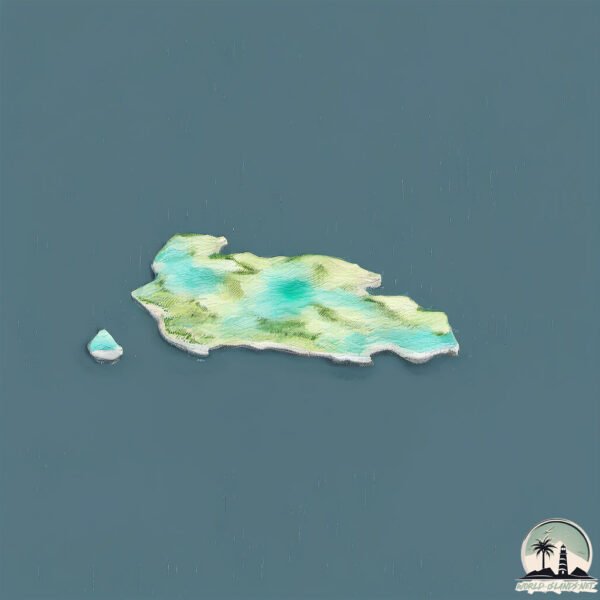Welcome to Fish , a Polar island in the Labrador Sea, part of the majestic Atlantic Ocean. This guide offers a comprehensive overview of what makes Fish unique – from its geography and climate to its population, infrastructure, and beyond. Dive into the details:
Geography and size of Fish
Size: 5.011 km²Coastline: 13.4 kmOcean: Atlantic OceanSea: Labrador SeaContinent: North America
Fish is a Small Island spanning 5 km² with a coastline of 13.4 km.
Archipel: –
Tectonic Plate: North America – Covers North America and parts of the Atlantic and Arctic Oceans, characterized by diverse geological features and varying levels of seismic activity.
The geographic heart of the island is pinpointed at these coordinates:
Climate and weather of Fish
Climate Zone: PolarClimate Details: TundraTemperature: Cold
Climate Characteristics: The tundra climate features long, extremely cold winters and short, cool summers. Vegetation is limited to mosses, lichens, and small shrubs due to the low temperatures and short growing seasons. Biodiversity is low, but some specialized species thrive.
Topography and nature of Fish
Timezone: UTC-04:00Timezone places: America/La_PazMax. Elevation: 116 m Mean Elevation: 83 mVegetation: Deciduous Needleleaf ForestTree Coverage: 17%
The mean elevation is 83 m. The highest elevation on the island reaches approximately 116 meters above sea level. The island is characterized by Plains: Flat, low-lying lands characterized by a maximum elevation of up to 200 meters. On islands, plains are typically coastal lowlands or central flat areas.
Dominating Vegetation: Deciduous Needleleaf Forest
Vegetation: 6 vegetation zones – Very Highly Diverse Island
Infrastructure and Travelling to Fish
Does the island have a public airport? no .
Does the island have a major port? no .
The mean population of Fish is 0 per km². Fish is Uninhabited. The island belongs to Canada .
Continuing your journey, Finger Hill Island is the next notable island, situated merely km away.
ISLAND SURVIVAL: Hand Catching Shark
Hand catching a Shark. Subscribe to the Channel. Why did we catch the Shark? You can watch the Full Episode here: ...
ISLAND SURVIVAL: Hand Catching Shark
Hand catching a Shark. Subscribe to the Channel. Why did we catch the ...
Hand catching a Shark. Subscribe to the Channel. Why did we catch the Shark? You can watch the Full Episode here: ...
FULL GUIDE To TREASURE ISLAND UPDATE In FISCH Roblox!
FULL GUIDE To TREASURE ISLAND UPDATE In FISCH Roblox! Join this ...
FULL GUIDE To TREASURE ISLAND UPDATE In FISCH Roblox! Join this channel to get access to perks: ...
ISLAND SURVIVAL: Stingray Barb to Spear Fish
Using a Stingray Barb to spear a fish. This is part of the Historic ...
Using a Stingray Barb to spear a fish. This is part of the Historic Survival Series now playing on our Channel.
Canada is classified as Developed region: G7: Group of Seven – Major advanced economies, including Canada, France, Germany, Italy, Japan, the United Kingdom, and the United States. The level of income is High income: OECD.
News – Latest Updates and Headlines from Fish
Stay informed with the most recent news and important headlines from Fish. Here’s a roundup of the latest developments.
Loading...
Please note: The data used here has been primarily extracted from satellite readings. Deviations from exact values may occur, particularly regarding the height of elevations and population density. Land area and coastline measurements refer to average values at mean high tide.

